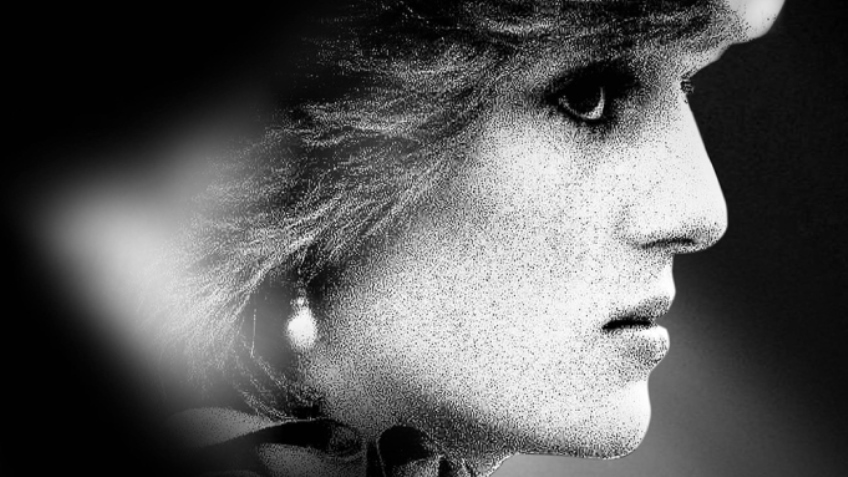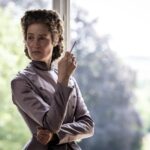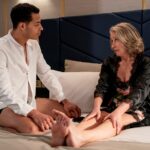Joyce Glasser reviews The Princess (June 30, 2022) Cert 12, 108 mins.
Director Ed Perkins (Tell Me Who I Am) and astute producer Simon Chinn (Searching for Sugarman; Man on Wire) know what Hamlet knew: timing is everything. Straight after the late Roger Michell’s tribute, Elizabeth: A Portrait in Parts contributed to a reassessment of the role of the monarchy, comes another royal story, also told entirely through contemporaneous archival footage – with no external analysis, captions or talking heads. If you question why we need another Diana film, The Princess is the answer. Perkins wants to turn history’s camera back on ourselves, for no previous royal was as accessible to the public, as stalked by the media or as deeply mourned.
While the story is familiar, not so this immersive, unadorned way of seeing it with the gift of hindsight. The film begins in 1997 with an anonymous recording from a passenger car driving past the Ritz Hotel where the crowd at the front door prompts a passenger to comment, “Wow, guys, on the right: somebody very important.” We are then taken back to early 1981 when a smaller, but persistent number of paparazzi surround Diana as she unlocks her car pressing for clues about an imminent engagement announcement. We always knew that from 1981 until 1997, Diana was stalked by the media but seeing her life compressed in the film heightens the pressure of living life in a glass bowl.
The famous engagement interview is familiar, but this time, when the glamourous couple are asked what they have in common, we notice Charles’ nervous giggle as he turns hopefully to his perplexed fiancée as though he had never thought of the question. One eye emerges from under her fringe to oblige the prince, ‘A sense of humour,’ phrased like a question. Diana adds, ‘outdoor activity,’ quickly qualified with, ‘except that I don’t ride.’ Charles whispers, ‘we’ll soon remedy that,’ but Diana’s face shows little enthusiasm. Minutes later we see her being rushed out of one of many polo matches she has been dragged to: perhaps a reaction to a security threat, but Diana seems happy to oblige.
“How many in the audience think the press should lay off [her] Diana?” an unidentified host asks, and everyone in the live audience raises a hand. With the gift of hindsight, we laugh at how wrong a panelist gets it when he wagers, “we are going to see a change in the attitude of the press now that she’s part of the Royal Family. All this telephoto lens stuff will stop.”
Walking down the aisle of the “fairy tale wedding,” on 29 July 1981, the sheltered 20-year-old Diana looks to the worldly 33-year-old Charles for reassurance three times, but he never meets her gaze. This time we notice that the carriage returning the married couple from Saint Paul’s to Buckingham Palace is escorted by Lt Col. Andrew Parker Bowles, the new Commanding Officer of the Mounted Household Cavalry. This time we hear a news commentator reassure us: “The couple have stayed with Parker Bowles and his wife Camilla in Wiltshire on two occasions, so they are among friends.”
And this time we can so readily connect across the years Charles’ chilling interview with biographer Jonathan Dimbleby, when he says that Camilla ‘… has been a friend for a very long time—and will continue to be a friend for a very long time.’
In a wonderful montage of royal walkabouts, we now see clearly how Diana gains in confidence and style as she works the huge crowds like a pro in increasingly sophisticated attire. ‘Charles couldn’t give away pictures of himself’ a commentator says, adding, ‘it’s Diana they’ve come to see.’
Charles irritation of being upstaged by his timid, stylishly dressed spouse crisscrossing the cordoned-off streets to accept flowers and chat with the crowds was such that we cringe at Charles’ attempt at a joke. ‘It would have been easier to have had two wives on either side of the street and I could walk down the middle, directing the operation.
After the disastrous trip to India in which Diana poses alone at the Taj Mahal, come the public laundry washings – the tit for tat biographies – Andrew Morton’s in 1993 and Dimbleby’s in 1994 and the confessional interviews that are as chilling as they are polarising. In the famous BBC interview she admits to an affair but in mitigation speaks of there being ‘three of us’ in the marriage, of Charles making her feel worthless and of consequential self-harm. The public shifts in favour of the wronged woman, particularly when Charles qualifies his claims that he was faithful during his marriage ‘…Until it became irretrievably broken down, us both having tried.’
The film includes commentaries on Diana’s noted weight loss before the wedding, but this time we realise this was more than “pre-wedding nerves” and that, as Diana herself admits in the BBC interview, she had a serious eating disorder. This could be a reflection of the unhappy marriage or a reaction to becoming a cover girl and fashion promoter, for Kate Middleton, though happy in her marriage, is now a skinny model.
Despite the fact the royals were living separate lives, Edwina Curry dismisses talk of divorce maintaining that all marriages have their ups and downs. Diana’s post marriage public image soars as she walks through landmines and hugs AIDS positive babies but is affected by her affair with the engaged Egyptian playboy Dodi Al Fayed. The public and the press waver, weighing her in the balance, with the public more sympathetic. Diana is accused (by the press) of turning them off and on like a tap.
Perkins allows us to read in our views of the monarchy since 1997 without ever mentioning Megan (her accusation of a palace conspiracy to discredit her reflects that of Diana in her BBC interview) or Andrew. There are notable emissions, but this clever and surprisingly gripping documentary was never intended to be a comprehensive history nor a biopic.
Earl Spencer’s scathing eulogy, ‘genuine goodness is threatening to those at the opposite end of the moral spectrum’ is, however, conspicuous by its absence, but journalist James Whitaker’s comment that ‘the best thing for the monarchy is for the Queen to live for a very long time’ is as true today as it was twenty years ago.




